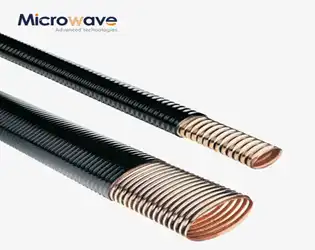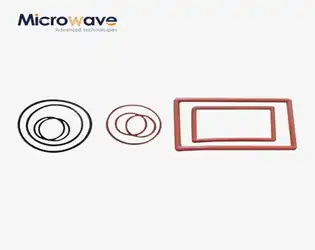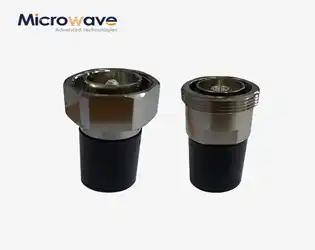BLOG

What Every RF Engineer Should Know About Single Channel Coaxial Rotary Joint Design?
December 17, 2025
Picture this scenario: Your satellite tracking system suddenly experiences signal dropouts every time the antenna rotates, causing critical data loss during crucial orbital passes. The culprit? An improperly designed Single Channel Coaxial Rotary Joint that fails to maintain signal integrity under continuous rotation. For RF engineers working with rotating communication systems, radar platforms, or defense applications, understanding the intricacies of Single Channel Coaxial Rotary Joint design isn't just technical knowledge—it's mission-critical expertise that determines whether your system delivers reliable performance or catastrophic failure. This comprehensive guide reveals the essential design principles, performance parameters, and application-specific considerations that separate exceptional rotary joint implementations from costly engineering mistakes.
Where to Buy High Power Waveguide to Coaxial Adapter — Top OEMs
December 17, 2025
When your satellite ground station experiences signal degradation during critical data transmission, or your radar system fails to maintain consistent power levels in defense operations, the problem often lies in a single component: an inadequate waveguide to coaxial transition. Finding a reliable High Power Waveguide to Coaxial Adapter from trusted OEM manufacturers is essential for mission-critical applications in aerospace, telecommunications, and defense sectors. This comprehensive guide reveals where to source premium High Power Waveguide to Coaxial Adapter solutions from leading manufacturers, what technical specifications matter most, and how to evaluate suppliers to ensure your high-power microwave systems operate at peak performance without costly downtime or signal loss.
Why Choose a Log Periodic Antenna for Multi-Band Coverage?
December 17, 2025
In today's rapidly evolving communication landscape, system engineers and telecommunications managers face a persistent challenge: how to maintain reliable signal coverage across multiple frequency bands without deploying numerous specialized antennas. This operational complexity drives up costs, complicates installations, and creates maintenance headaches. The Log Periodic Antenna emerges as a transformative solution, offering seamless multi-band operation that eliminates the need for constant retuning or equipment replacement as frequency requirements evolve.
Benefits of Elliptical Waveguide for Long-Range Transmission
December 16, 2025
When your microwave communication system struggles with signal degradation over distance, experiencing unacceptable attenuation losses that compromise data integrity in critical applications like satellite ground stations or defense radar installations, you need a transmission solution that delivers consistent performance across hundreds of meters. Elliptical Waveguide technology addresses these exact challenges, offering a flexible yet highly efficient alternative to rigid rectangular waveguides and lossy coaxial cables for frequencies ranging from 2 GHz to beyond 40 GHz, making it the preferred choice for long-distance RF energy transmission in demanding environments.
Waveguide Flange Gasket for Pressurized Systems: Key Features
December 16, 2025
In high-power microwave applications, system failures often stem from a seemingly minor component: the waveguide flange gasket. When pressurized systems lose integrity at flange connections, signal degradation accelerates, moisture infiltrates sensitive electronics, and catastrophic arcing can damage expensive equipment. Understanding the key features of waveguide flange gaskets for pressurized systems is essential for engineers who demand reliable performance in satellite communications, aerospace radar, and defense applications where system downtime is not an option.
How Durable Are Plastic Flange Caps Under Harsh Environments?
December 16, 2025
Picture this scenario: your critical microwave components arrive at a remote satellite ground station after weeks of transport through extreme temperature fluctuations, high humidity, and dust-laden environments, only to discover corroded flanges that compromise signal integrity. This nightmare scenario highlights why understanding Plastic Flange Caps durability in harsh conditions isn't just a technical consideration—it's mission-critical. When manufactured from high-density polyethylene (HDPE) and engineered with UV-resistant formulations, Plastic Flange Caps can withstand temperature ranges from -40°C to 70°C while maintaining structural integrity, providing reliable protection against moisture ingress, mechanical damage, and environmental contaminants that threaten waveguide performance in aerospace, defense, and telecommunications applications.
OEM Coaxial Load Solutions: How to Choose the Right Vendor
December 15, 2025
When your RF testing system fails mid-operation due to reflected power damaging sensitive components, or when signal integrity issues compromise critical radar performance, the root cause often traces back to an inadequate coaxial load solution. Selecting the right OEM vendor for coaxial load products is not merely a procurement decision—it represents a strategic investment in system reliability, operational efficiency, and long-term performance. This comprehensive guide examines the critical factors that distinguish exceptional coaxial load vendors from inadequate ones, helping you make informed decisions that protect your equipment, optimize signal performance, and ensure mission-critical applications operate flawlessly under demanding conditions.
Top Benefits of Low-PIM Coaxial Directional Coupler Designs
December 15, 2025
In today's wireless infrastructure deployments, network operators face a critical challenge where signal degradation from passive intermodulation can cripple system performance, leading to dropped calls, reduced data throughput, and compromised coverage in distributed antenna systems. Low-PIM Coaxial Directional Coupler designs solve this problem by minimizing unwanted signal distortion while maintaining precise power distribution across multiple frequency bands. These advanced components ensure that modern cellular networks operating across 2G, 3G, 4G LTE, and 5G technologies deliver the reliable, high-quality connectivity that users demand in mission-critical applications.




